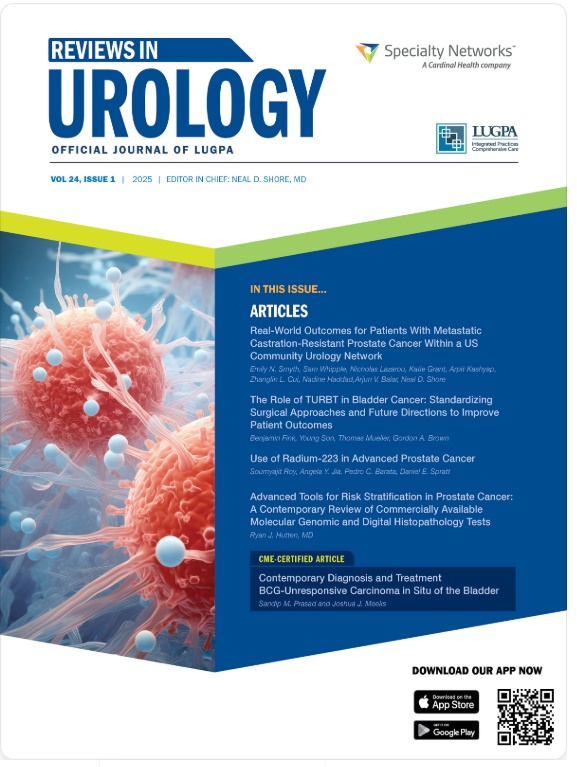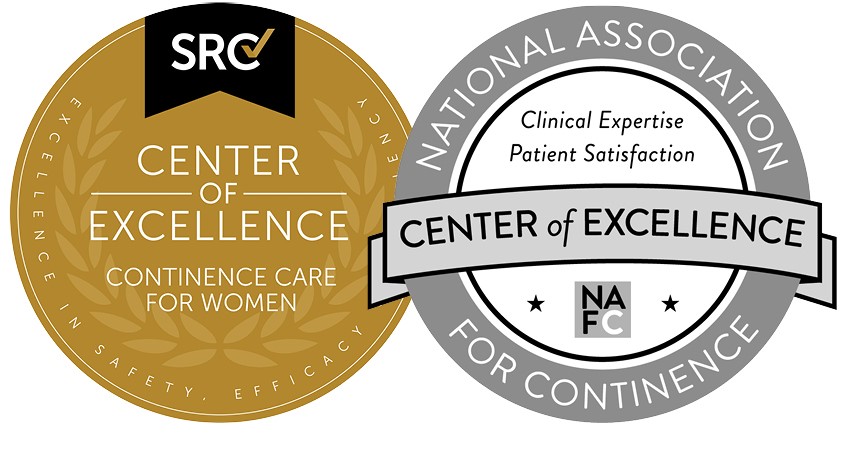Now Available:
|
 |
|
The Role of TURBT and Bladder Cancer: Standardizing Surgical Approaches and Future Directions to Improve Patient Outcomes
Fink B, Son Y, Mueller T, and Brown G
Transurethral resection of a bladder tumor (TURBT) is the cornerstone of diagnosis, treatment, and risk stratification. The quality of TURBT varies wildly among practicing urologists. Bladder cancer is the sixth most common cancer diagnosed in United States and was responsible for over 18,000 deaths in 2024. Standardizing TURBT is essential to provide consistent and reproducible results and optimizing surgical outcomes.
A broad consensus exists that all visible tumors should be resected at the time of TURBT. The European Association of Urology provides detailed guidelines for TURBT techniques, recommending en-bloc resection for small papillary tumors whereas larger tumors should be resected in fractions to include adjacent bladder mucosa and deeper detrusor muscle layers and to avoid the risk of perforation. Establishing a checklist is one approach to standardization. Another approach has been the use of urologist–focused quality improvement programs. Novel approaches to standardization and reproducibility of TURBT, including the use of virtual reality surgical simulators, have been linked to improved surgical outcomes.
Repeat TURBT is universally recommended in clinical guidelines for patients with T1 non-muscle invasive bladder cancer (NMIBC). Studies have shown that repeat resection 2 to 6 weeks after initial TURBT for high-grade TA or T1 NMIBC reveals residual tumor in up to 70% of cases and upstaging and up to 20%. Repeat TURBT is widely recognized as a critical component of adequate bladder cancer staging. Over the past decade, the rate of re-TURBT has declined with fewer patients undergoing the procedure.
Novel technologies, including blue-light cystoscopy and MRI are excellent tools for providing maximal benefit and patient-specific care. Although no single urinary biomarker has proven optimal for improving NMIBC prognosis, a synergistic approach combining these biomarkers with maximal TURBT shows promise in predicting recurrence.
As the global population ages, the issue of frailty and urological procedures has become a critical concern. The average age for bladder cancer diagnosis is 73 years, notably older than the mean age for all cancer diagnosis. Although frailty is not synonymous with functional impairment, it is a factor influencing postoperative outcomes in generic urologic patients. Treatment strategies must prioritize minimizing postoperative complications while achieving an optimal balance between cancer control and quality of life. Maximal TURBT in the setting of trimodal therapy is a reasonable alternative to radical cystectomy for muscle invasive bladder cancer in terms of survival and oncological outcomes, especially in older or frail patients.
Advanced Tools for Risk Stratification and Prostate Cancer: A Contemporary Review of Commercially Available Molecular Genomic and Digital Histopathology Tests
Hutten R
Patients diagnosed with localized prostate cancer often presented with multiple treatment options based on clinical and pathological features. Conventional risk stratification with the NCCN risk groups categorized patients as low risk, intermediate risk, and high risk. These groups provide context for interpretation of clinical trial results and allow for generalized treatment recommendations as outlined by expert consensus panels. Currently commercially available tissue-based molecular test for prostate cancer includes Decipher, Polaris, and GPS. Artera AI is currently the only digital histopathology tool listed in the NCCN guidelines.
The use of these advanced tools has been increasing over time. Among surveyed experts, more than 3 out of 4 respondents believe that these tools had value in risk stratification and treatment selection for patients across NCCN risk groups. Only approximately 1 and 4 experts, however, reported using genomic classifier tests clinically. Among surveyed experts, metastasis–free survival was believed to be the most relevant endpoint for low risk (83%), favorable intermediate–risk (97%), and high–risk (97%) prostate cancer biomarker studies, respectively.
This paper reviews the commercially available molecular genomic and digital histopathology tests. The landscape for prostate cancer management is evolving with the introduction of these tools. They offer a more precise approach to risk stratification and treatment decision making. These advanced tools provide critical prognostic and predictive insights that can refine clinical decisions in active surveillance, treatment intensification, and postoperative radiation therapy. In the absence of prospective data, it is critical that clinicians understand the context in which these advanced tools were developed and validated to appropriately use and interpret their results.
Real-World Outcomes for Patients with Metastatic Castrate–resistant Prostate Cancer within a US Community Urology Network
Smyth E, Whipple S, Lazarou N, et al.
Prostate cancer is a leading cause of mortality and morbidity both globally and in the United States, representing a substantial public health burden. While most prostate cancer cases are localized (70%) or regional (13%) at initial presentation and an estimated 8 - 9% of patients present with distant metastasis. Metastatic castrate–resistant prostate cancer (mCRPC) represents the most aggressive phenotype of the disease. This study was a retrospective analysis of over 15,350 patients with mCRPC. Among the stratified patients, 44% had genetic testing performed and documented during the study. The most common 1L systemic regimens used in this population were enzalutamide (37%), abiraterone (17%), and sipuleucel-T (14%). Combined, the top 3 1L treatment regimens accounted for 68% of overall first-line therapy, and novel hormonal agent (NHA) monotherapy accounted for 65% of 1L therapy. The time to next treatment (TTNT) with 17 months in the overall population. The mean overall survival (OS) was 35 months.
In a population of patients treated by community urologists, a notable percentage of patients received NHA based treatment for both mHSPC and 1L mCRPC. Only a small percentage of patients (11%) were referred to oncologists for care. The remainder of the patient was solely cared for by their urologist. The lack of referrals to oncology represents an opportunity to optimize the treatment of patients with mCRPC by engaging a multidisciplinary team. African American patients experienced numerically better TTNT and OS in the overall population despite a greater percentage of patients with advanced disease at diagnosis.
Based on these findings, opportunities for improvement in the care of patients with mCRPC in the community urology network include better adherence to guideline recommendations with respect to the use of an NHA's, consideration of genetic testing, greater focus on screening efforts for African American patients, and greater multidisciplinary collaboration with oncology clinicians.
The issue also includes perspectives on abiraterone in high-risk localized prostate cancer, evolving roles for radium-223 and darolutamide, and updated approaches to BCG-unresponsive CIS. Additional articles explore innovations in diagnostic tools for complicated UTIs, coding insights for outpatient evaluation visits, and a rare case of testicular metastasis discovered via PSMA PET.
A message from LUGPA's President, coverage of the inaugural Global Prostate Cancer Congress, and a "Meet the Experts" interview with Wanda Wilt, RN, and Gordon A. Brown, DO are also in this issue.
Read the Entire Issue Here




